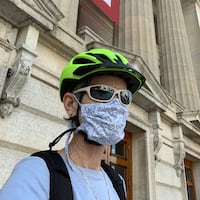Related: Return of Dayton’s red light cameras uncertain
The bills would prohibit municipalities or townships without their own fire departments from using photo-monitoring traffic devices; bar the use of them by jurisdictions with less than 200 residents; limit authorities to issuing no more photo-monitoring tickets than twice their population; and prohibit local jurisdictions from receiving more than 30 percent of their revenue from tickets written based on photo-monitoring devices.
Patton is scheduled to give testimony on the bills Tuesday in a House committee but he doesn’t plan to push the legislation until after the Ohio Supreme Court rules on a case state law that took effect in March 2015 that restricts the use of red light and traffic enforcement cameras.
Related: Judge rules New Miami speeders owed $3 million
The new law imposes hefty requirements on cities that want to use the cameras: a full-time police officer must be posted at each camera in operation, a three-year traffic study must be conducted before a camera is deployed, and cities must give speeders “leeway” — 6 miles per hour over in a school zone and 10 mph over elsewhere — before issuing tickets.
The high court typically rules on cases four to six months after oral arguments. The case was heard in January.
Patton said Linndale and Newburgh Heights in his senate district are using officers with hand-held photo enforcement cameras. He said he would rather that local jurisdictions deploy officers in police cars because their visibility reminds motorists to slow down and drive carefully.
Related: Take our poll: Should cities be allowed to use red-light cameras?
Opponents call traffic cameras automated speed traps deployed just to churn up money for government coffers. Proponents, though, say the cameras free police officers to do other work and prompt motorists to change their dangerous driving habits.
About the Author

